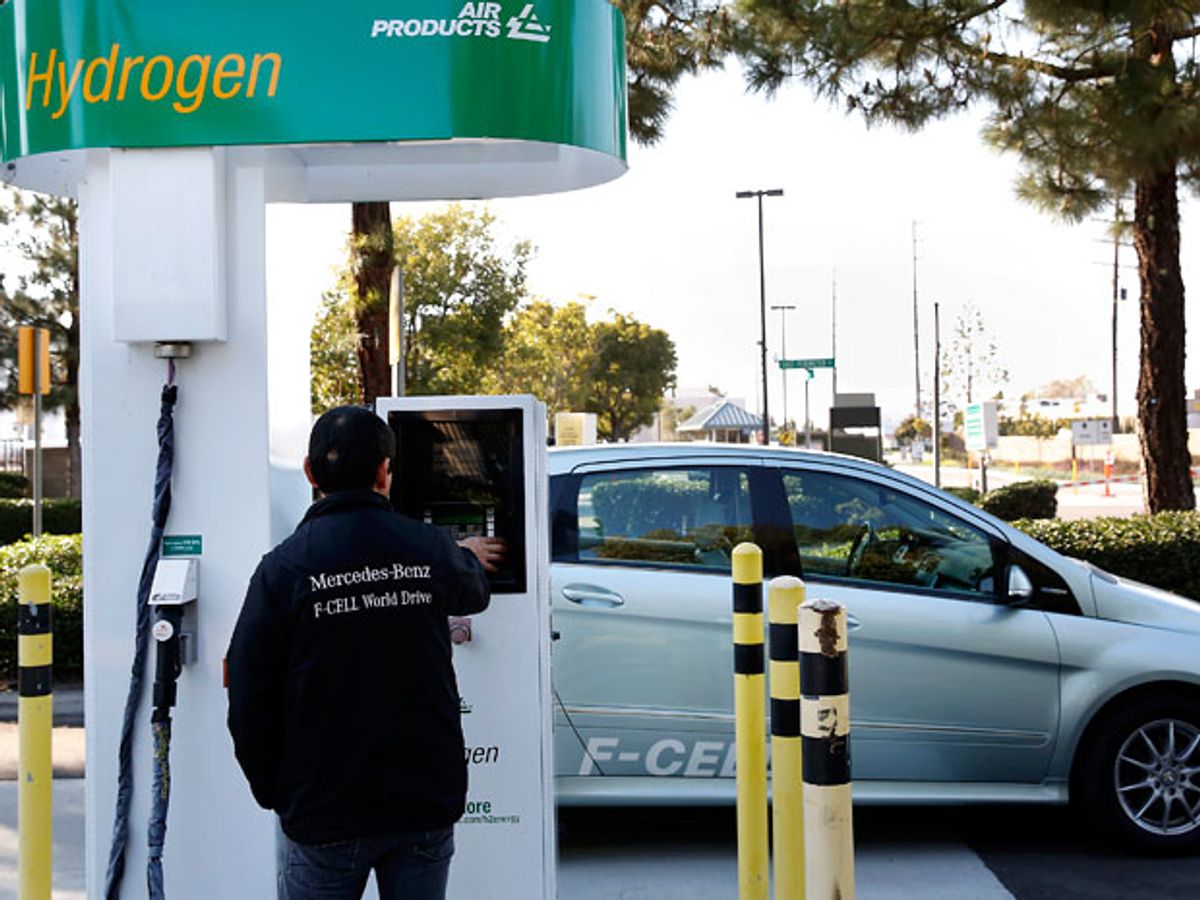From construction materials to livestock to aeronautical engineering to ice cream, the U.S. National Institute of Standards and Technology (NIST) keeps an annual tally of the weights and measures needed for industries throughout the nation’s economy. NIST’s Handbook 44 is like a Whole Earth Catalog for the durable and consumable goods sold in the United States, including gasoline—and now hydrogen.
Hydrogen fuel cells weighed in recently to join the U.S. industrial marketplace. And the fuel pumps that would dispense hydrogen to fuel-cell-powered cars can, new research from NIST suggests, live up to the measurement standards U.S. regulators would require.
Hydrogen fuel cells combine molecular hydrogen with oxygen from the air to generate electricity plus water vapor exhaust—making for a powerful electric vehicle propulsion system with zero carbon emissions. On the other hand, the hydrogen fuel itself may be made by fossil fuels, at least in the near term. And of course, as seen as long ago as the Hindenburg air disaster, the technology also necessarily involves a volatile and possibly explosive fuel.
Fuel cells’ skeptics have included Tesla Motors CEO Elon Musk (whose battery-powered electric cars would of course be marginalized if fuel cells took off) and former U.S. Secretary of Energy Steven Chu, who famously said it’d take a miracle to render hydrogen fuel cell cars practicable. (He has also more recently reconsidered his critical words.)
Although today there are only about a thousand fuel-cell powered cars and buses operating around the world, by next year that number is projected to grow. (California at least is meeting the anticipated demand with 28 hydrogen filling stations like the one pictured above, along with a further projected 28.) Automakers including Toyota, Honda, GM, and Hyundai have all announced their upcoming lines of hydrogen-powered cars as soon as next year. And this means measuring, storing, and pumping hydrogen fuel must also become better standardized to join the real-world economy.
NIST’s Handbook 44 standards for hydrogen [PDF] mandates that filling stations selling the fuel be able to dole out the gas to at least a 2 percent accuracy. This translates to a hydrogen fuel pump meting its kilograms output—and a kilogram of hydrogen contains about as much stored energy as a gallon of traditional petroleum—to an accuracy of 20 grams (or about the weight of four sheets of paper).
But hydrogen is a wily gas, with a molecular weight as light as molecules come. It’ll sneak out of seams, crimps and joints like nearly no other gas, save perhaps for helium. Leaks can be tricky to catch, as well as possibly dangerous. Moreover, can a fuel pump really deliver the hydrogen fuel it says it’s delivering to a 2 percent accuracy or better?
According to recent research by NIST scientists, the answer is yes.
Using simulated helium fuel, presumably for safety reasons in prototyping the experimental fuel-measuring system, NIST researchers developed a pump that can dispense 3 kilograms of fuel in 3 minutes with an accuracy of 0.45 percent.
The marketplace still has to render its verdict on whether fuel cell cars are worth the convenience, range, sticker price, and fuel price at the pump (the latter two of which are yet still shaking out). But NIST is at least preparing to provide the meters that filling stations would need to assure fuel cell car owners they’re actually buying the fuel the pump says they’re buying.
“We can extrapolate that it is possible to measure hydrogen with accuracy sufficient for a fair marketplace,” says NIST’s Jodie Pope.
Margo Anderson is the news manager at IEEE Spectrum. She has a bachelor’s degree in physics and a master’s degree in astrophysics.



